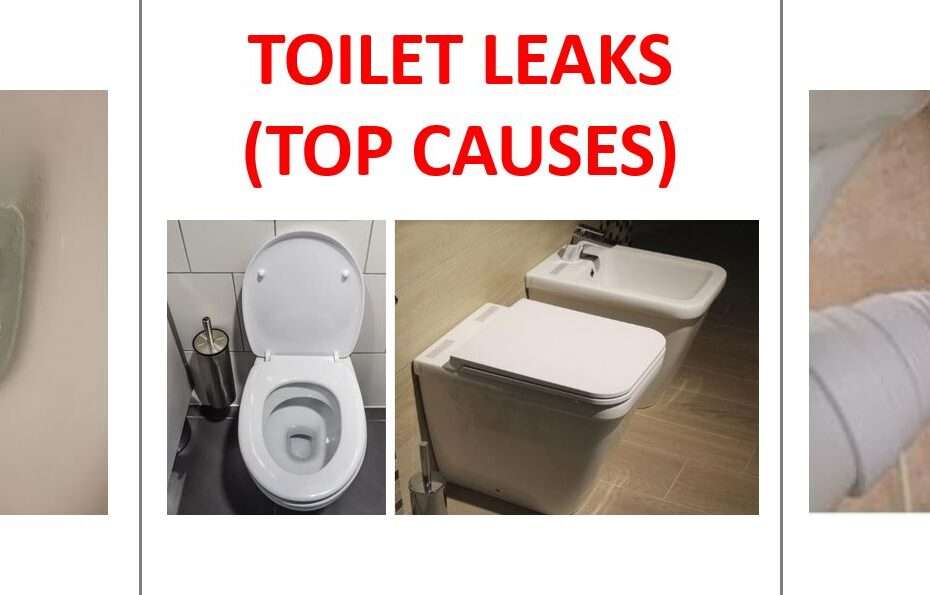When carrying out water leak detection one of the places we examine is looking for a toilet leak. They are one of the most common types of leaks in the UK, especially with the rise of multiple bathroom properties (including ensuite bathrooms). More toilets can mean more toilet leaks!
In our article about bathroom leaks, prominent on that list was toilet leaks. So in this useful guide, we are going to dig into more detail as to the most common causes of toilet leaks, explaining each one in detail individually. This information can help to locate or understand toilet leaks and toilet leak detection processes.
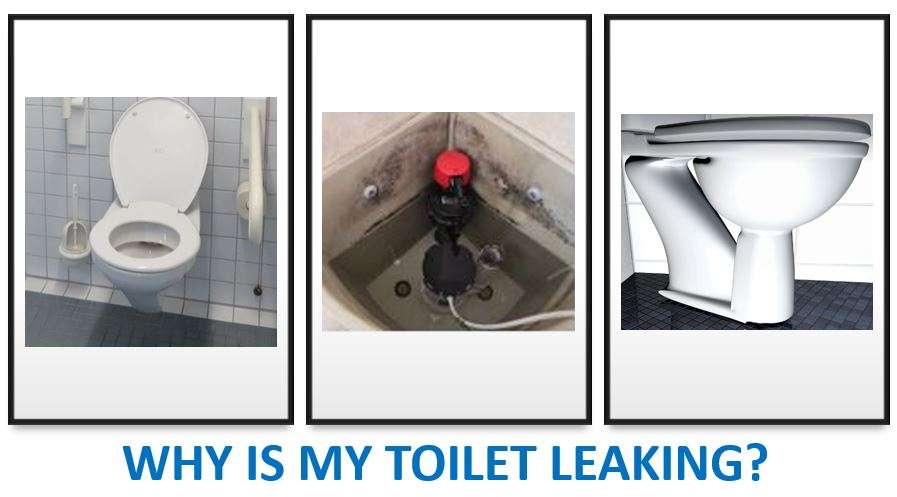
As you will see, some of these toilet leaks arise from the fact that toilets are used on a daily basis in most properties and that wear and tear can contribute to toilet leaks on many occasions. So let’s now go through each of the top causes of toilet leaks, one by one.
For the avoidance of doubt, these types of leak apply to ‘standard’ toilets. Although some of the things on this list could be relevant to a bidet leak or urinal leak, we’re not specifically referring to them here.
1 – Cold Water Feed Toilet Leak
Each time you flush the toilet, the cistern tank is refilled by the cold water feed to the toilet and this can be a source of your toilet leak. In our article about how much water things use, we explained that toilets can typically use 8 to 10 litres of water on each flush. You can see more about this in our really handy water usage calculator, which includes flushing the toilet.
The toilet leak from cold water feeds can be either on the plumbing pipe feeding the toilet, a connection associated with that or even where it attaches to the toilet internally (or externally – more on that later). Like many leaks, cold water feed toilet leaks can be small drips, or in worse cases, a full mains pressure leak (perhaps suddenly). Clearly you’d be more likely to spot that immediately.
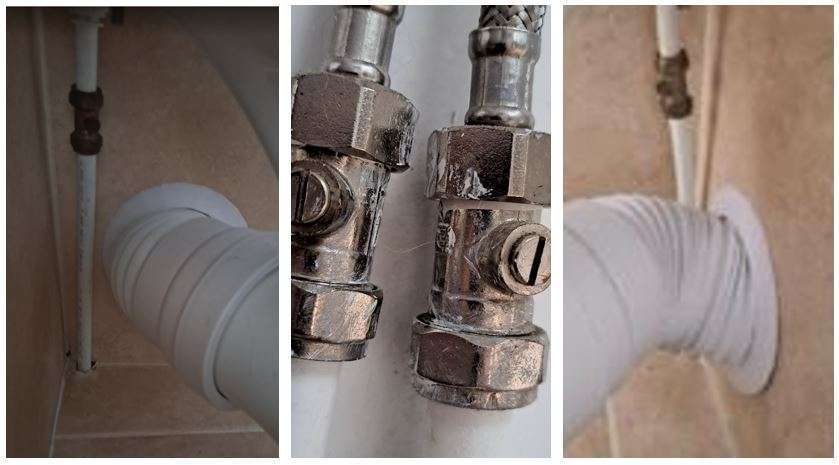
Because cold water feeds to toilets may run through walls and floors in the adjoining area, and because toilets are commonly upstairs, this can in turn lead to a ceiling leak and additionally alongside that, ceiling water damage.
2 – Toilet Leak from Waste Pipe
The next toilet leak that is common is from the waste pipe which feeds into the sewers, possibly via a vented soil stack. As we said earlier, toilets suffer from wear and tear and when you flush them, it puts a strain on the pipe network that your waste is being flushed into.
This in turn puts pressure on connections from the toilet and into the waste drains and, over time, these can weaken, split or become disconnected from the sewer line. Clearly, unlike the cold water feed toilet leak, this is going to be more unpleasant as it will contain human waste etc. This makes such toilet leaks a potential biohazard and more unpleasant to deal with.
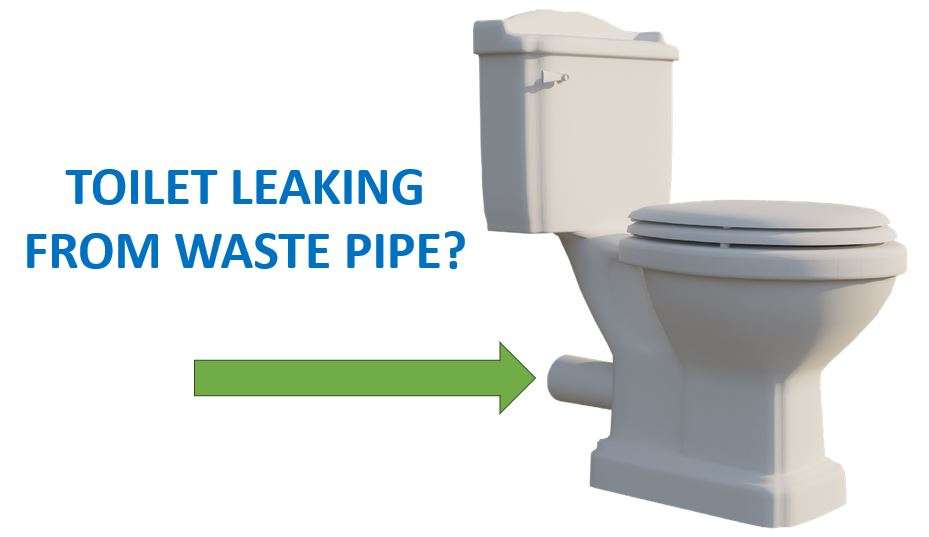
In some instances, because of what we just said, you may discover or suspect that you have a toilet leak because of the smell (if it is a waste leak). So if you notice a bad smell near your toilet and suspect you have a toilet leak, contact us for help.
As well as offering leak detection in domestic properties, we also do commercial leak detection too. So if you have a business water leak, of any sort, contact us to discuss.
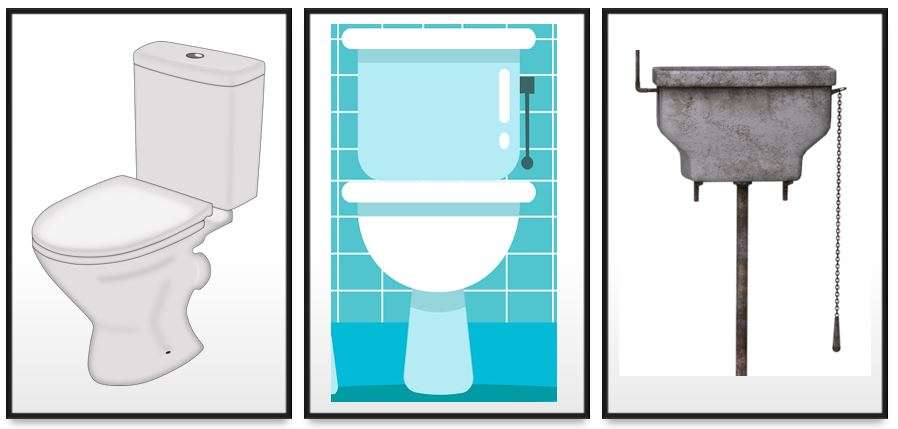
3 – Toilet Leak from Cistern
This type of toilet leak can encompass a number of things, and is somewhat linked to the first on our list regarding the cold water feed toilet leak. However, on this occasion, we are talking about a water leak from the toilet cistern itself.
Because toilet cisterns have to hold a fair volume of water, and flush that water away (then refill) it too can have strain placed upon it. We will cover this more in another section, but there is obviously the toilet flush mechanism, toilet siphon, O-ring seal connections etc within it.
In some instances cisterns can get damage, perhaps even a hairline crack which can leak. You also can get more ‘catastrophic’ leaks if the toilet cistern fittings attaching it to the wall break, which does occasionally happen. Just one of the reasons you should not put your body weight onto a cistern or even lean on it!
Clearly, if that occurs, not only will all the water spill out but it will likely have constant running water too, which can cause major water damage in only a short period of time.
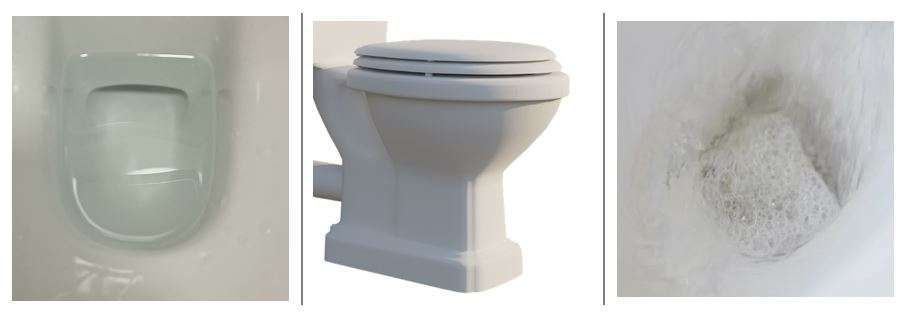
4 – Toilet Leaking from Base or Bowl
This follows on nicely from the previous type of toilet leak, but this time we are talking about damage to the toilet base itself, again like above, this could be a hairline crack to the toilet porcelain / pottery / ceramic (or whatever material it is made of).
This could be in a visible area, but can also be in a place not visible directly, within the body of the toilet close to the u-bend etc. Even when they are in a visible location, the crack or fracture can be very hard to see. This in turn can mean that the leak itself is very slow, building up over time.
If you see water pooled at the base of your toilet, this could be the cause, especially if you thing the flooring around it seems soft or spongy too. Similarly, if you notice that water is disappearing from the bowl over time, and when you go to the toilet you notice there is no water (or lower water), then that can be a sign too, so be alert for that.
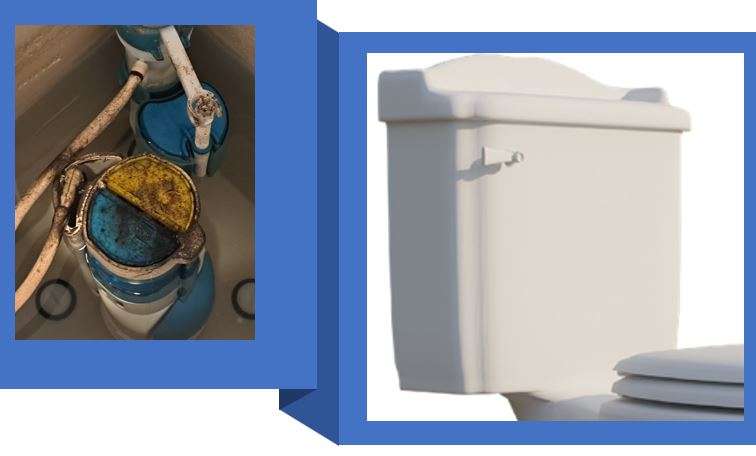
5 – Leak from Toilet Internal Mechanisms
We have referenced this earlier but another area that you can get a toilet leaking from is the mechanisms within it. This can include:
- The toilet float mechanism
- The cold water refill
- The overflow tube
- The valves / siphons etc
- Other internal connections and seals
The design of these will vary according to the design of each toilet and the age of it too. More modern toilets may have two different levels of flush, possibly even via a toilet flush button rather than a more traditional lever or chain mechanism (often seen on high level flush toilets).
How this leak manifests itself will depend on which component leaks and where that leak goes to. For example, it may just flow into the toilet bowl, or the overflow. Although that might not be as serious, it can be something to watch out for, especially as it may use water.
If you have a high water meter reading, this is one of the possible causes!
Remember that, if you’ve got Trace and Access on your home insurance policy, the cost of finding and fixing the water leak could be paid for by your insurer. It’s worth checking.
6 – Toilet Overflow Leaking
Although we mentioned this in the previous section a toilet leaking from the overflow is something worth delving into more detail on. Toilet overflow leaks can sometimes be very obvious, if as is common, the overflow goes to an external overflow pipe (sticking out of your wall near the toilet).
In that instance you may see water trickling or flowing fast out of the overflow and that is a good sign to get your toilet checked out ASAP. In some instances, especially more modern toilets, this will often flow into the toilet or possibly waste pipe etc. Be vigilant for these clues as to a possible toilet leak.
If you do have an external overflow pipe leaking, be aware that if it goes unchecked over time, the water can run down the wall causing issues later with damp on walls internally.
Clearly the configuration can vary according to whatever the plumber or builder decides works best for them but, ultimately, this water from the overflow can end up going to a place that can cause water damage either suddenly or over time, so be alert for it.
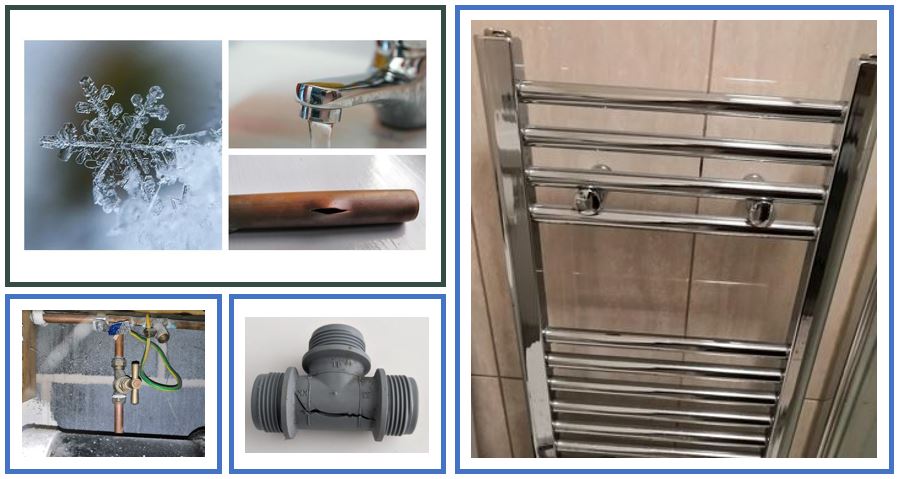
7 – Something Other than a Toilet Leak
As we have highlighted in outer articles regarding the top causes of leaks in specific things, often it is not the item you suspect is leaking but something else nearby.
Clearly, toilets are often in areas such as bathrooms or ensuites where there are a number of other plumbing connections, pipework etc and it may manifest itself as appearing to be a toilet leak when in actual fact it could be something else entirely different.
This could include the following (which we have guides for):
- A shower leaking – or shower drain leak
- Burst Pipe Leak
- Frozen Pipe Leak
- Leak from a neighbouring flat
- A Leak Under Floorboards
- Radiator Leaks
- Central Heating Boiler Leak
- Or even a loft tank leak
If you need help with any of these contact us for professional and reliable help from our dedicated team of water leak detection experts.
Here are some other similar articles you might find interesting too:
- Water Leak Between Meter And House
- Dew Point Charts
- Pressure Relief Valve (PRVs)
- Black Mould Causes
- Thermal Imaging Leak Detection
Toilet Leak Detection FAQs:
What do I do if my toilet is leaking?

If you think you have a leaking toilet, then get it investigated ASAP. Toilet leaks can be slow drips or, in worse cases, running water. Both of these can cause considerable water damage to the building and contents in your property nearby. Plus with such leaks, there are the hazards from dealing with waste / sewer water which can be unpleasant too.
Why would a toilet leak from underneath?

There are a number of reasons a toilet might leak from underneath, or it may not actually be the toilet itself leaking, it could be a connection to the toilet or some other plumbing leak nearby. However, if it is the toilet leaking from underneath, then it is possible that their is a hairline crack in the toilet bowl that is leaking water to the underneath area and flooring.
Why is my toilet leaking into the bowl?

There can be a number of possible causes for a toilet leaking into the bowl constantly. However, commonly this is due to a fault with the inner workings and mechanisms within the cistern, as part of the flushing and refill mechanism. This can include connections, seals, gaskets and connections. Or even a fault with an associated water pipe feed nearby.
